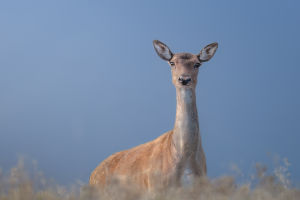Cats are one of the most popular pets in the world, they are diligent about keeping their bodies clean and don't need their owners to take them out for a walk. But until now, much about their feline friends has remained a mystery to even the most dedicated pet owners.
Have you ever wondered what makes cats so lightweight? If you look closely, cats walk on their tiptoes, which gives them an amazing ability to bounce. In fact, the ability helps them run without damage, providing a shock absorber for cats when they jump from above.
Cats indulge in 14 to 15 hours of slumber each day. Yet, if you keenly observe a cat in repose, you'll notice that their ears flick at the slightest sound, ready to spring into action at a moment's notice. Even in the depths of sleep, the cat's instincts remain sharp; a gentle approach or the faintest disturbance is enough to rouse them from their dreams in an instant. Since the cat is a hunting animal, in order to be able to feel all the movements of the outside world keenly, cats only have deep sleep for 4 to 5 hours a day.
There are 12 whiskers on each side of a cat's face. Whiskers, like cat hair, fall off naturally and then regenerate. Moreover, the cat's whiskers have many functions, such as identifying direction, protecting eyes, helping with hunting, measuring objects, expressing emotions, and so on.
Cats have large, alluring eyes that come in a variety of colors. Some cats have two different colored eyes, usually one blue and one green or orange. Eye shapes also vary between breeds.
Chartreux and Persian cats, for example, have round eyes, while other breeds, such as the Maine Coon, retain the slightly slanted eyes of their wild ancestors. In some Oriental cat breeds, including Siamese cats, the eyes are more pronounced and almond-shaped.
The cat's eyes look very bright, but in fact, the cat is just farsighted. A cat's near-sightedness is only about one-tenth that of a human's. Moreover, cats are less sensitive to still life, and can only see stationary objects 10-20 meters in front at most.
With a normal body temperature ranging between 38 to 39.5 degrees Celsius, cats naturally run hotter than humans, rendering them more susceptible to cold temperatures. Thus, during chilly weather spells, it's imperative for owners to ensure their feline friends stay snug and warm. When it comes to monitoring their health, taking a cat's temperature at home is best done by gently assessing the warmth inside their hind legs.
A cat's physiology also diverges from humans in terms of taste perception. Unlike mammals with a sweet tooth, cats lack taste receptors for sweetness, instead favoring flavors ranging from salty and bitter to spicy and sour. Yet, their penchant for high-fat treats like cakes and biscuits persists, showcasing a distinct palate preference.
Cats' enigmatic charm lies not only in their sleek appearance and graceful demeanor but also in the intricate nuances of their physiology and behavior. As they continue to enchant and bewilder, the allure of these beloved companions remains as enduring as ever.


